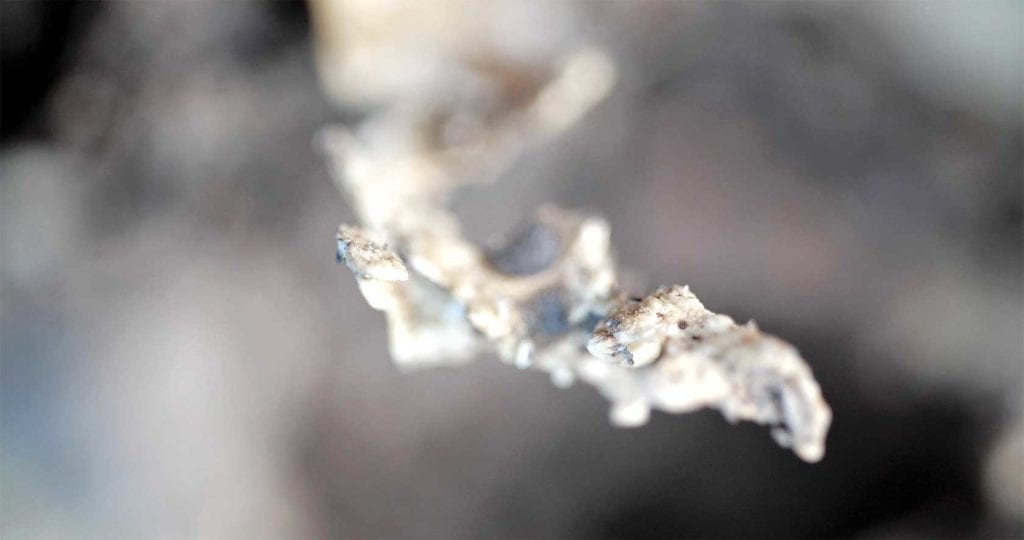
The first punch of Peruvian artist Maya Watanabe’s piece “Liminal” at Brandeis University’s Rose Art Museum comes from its sheer scale. The 20-foot tall screen dominates the Henry and Louis Foster Gallery and stands solo in the middle of the otherwise empty room. The second punch comes when visitors realize what’s being projected on that screen.
“Liminal” is an hour-long film installation shot in tightly framed pans that go in and out of focus across a hard-to-place landscape. “It’s very painterly in the way she uses the camera,” says assistant curator and exhibition organizer Caitlin Julia Rubin. “It’s not immediately obvious what you’re looking at.” At first there is only dirt, rocks, bugs and a few archeological markers. But as the film goes along the frayed edges of clothing, shards of bone and teeth come into focus.
Watanabe is taking museum visitors on an hour-long tour of a mass grave. During the 1980s and ’90s, Peru was plagued by widespread violence between revolutionary guerilla groups and military forces from the government. It was the inhabitants of rural, impoverished areas — ironically the people who were supposedly being liberated — that suffered the most during the conflict.
Only in recent years has it been revealed that what was previously said to be a death toll of 25,000 individuals was actually closer to 70,000. Many of these bodies were in unidentified mass graves and their families were never given the closure of knowing what happened to them. Watanabe filmed “Liminal” during the excavation of these graves. Her enormous scale is an effort to finally give these victims the voice they always deserved.
“The people who died were really twice disappeared,” says Rubin, referring to the fact that they were both killed and then forgotten. “The installation is so central to the way Maya wants the work to be seen. It’s taking up as much space as it can.”
This exhibition, running at the Rose through Aug. 25, is the North American premiere of “Liminal” and Watanabe’s first U.S. solo show at a museum. Though the subject matter is specific to Peru’s history, the themes transcend country borders. Rubin says, “At what point do we acknowledge the suffering of others as grieve-able? I think that’s a very relevant question to our country right now.”
The Rose Art Museum is bringing a powerful new voice onto the national artistic stage. Visitors are encouraged to spend time with the work, settling into the space and feeling the experience wrap around them. It’s well worth it. “Liminal” is enigmatic, unsettling and essential.








